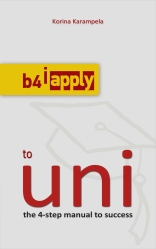When you enter our home, do you close your front door? When the dark comes and you switch on the lights, do you draw the curtains?
Most of us do so to protect our privacy. We don’t necessarily have something to hide. We simply don’t want others to peek into our lives.
At the same time, when we surf the internet, we have a false sense of privacy because there is no one physically watching us. In reality though, what happens is even more pervasive. Every website we visit, every comment we write, every ‘like’ we make is constantly tracked and recorded. (If you have the habit to clear your browsing history, you need to know that this deletion happens only locally.).
[Every breath you take, Every move you make, Every bond you break, Every step you take,
They’ll be watching you.]
All this data (most of which we give voluntarily but without realising it) is then used to predict our consumer behaviours.
‘So what?’ Some people say. ‘What can they do with this? Let them send me advertisements. I don’t mind.’
Many people may be ok to watch a small (tailored to their needs) ad on one side of their screen, especially if they get to use a platform/service for free.
The problem is that we don’t know what information is collected and how it will be used. In the past, when it was expensive to gather and store information, companies and governments were very selective in whom they were targeting and they only collected the information they needed for a specific purpose.
Nowadays, technology has made it easy and inexpensive to target many people and gather and store everything they are doing without having a specific purpose in mind. The rationale is that they will sell it eventually to somebody else who will find out how to use it for their benefit.
[For example, the apps we use to log in our runs contain a lot information of our physical activities. The genetic material we give to find out who our ancestors were has sensitive data about our genetic predispositions. If health insurances get access to it, they may adjust their pricing policy accordingly – increase the premium for those that the data predicts might have poor health in the future.]
Companies will soon be able to access our data from different sources and will use it to assess their risk/benefit in decisions regarding our loan, university or job application (or in ways we cannot yet imagine).
In addition, we don’t only consume goods, we also consume ideas.
The big social networking platforms can shape our perceptions and beliefs because they have enough information on each of us to know what we are doing or desiring at any point in time and they can use this data to predict our future behaviour accurately (the more data they have and better the algorithms they use, the better the accuracy). They know us better than our closest friends and they use emotional tools instead of rational which are even more effective.
In this context, the power the social networks have is immense and it can be used to influence our views on different social topics by providing us a highly personalised content. They will do so as long as somebody is willing to pay for their services. The more extreme the positions are, the more people will be hooked to the social platforms. (There is already a fight for our attention.)
It is only recently that most of us have become aware about how our personal data is used (and abused).
There are currently discussions about putting regulations in place. (In some industries, self-regulation can be effective. It is difficult though to see how self-regulation can work in regards with monopolies). These changes will take years to be implemented especially because cross-nation agreements will be necessary.
(By the way, technology doesn’t only facilitate big scale surveillance by corporations but also by governments. The latter cannot go unchecked either.).
In the meantime, are there any actions we can take to protect our data?
Yes, there are.
You can find a lot of useful info and tools online.
I would like though to share with you some key guiding principles for you to consider:
- Minimise the amount of data you give voluntarily. Review frequently your settings and disable the functionalities you don’t need, use or understand (e.g. you can disable your Location Services and enable them only when you need them, you can reject cookies, etc).
- Always question whether what you get in return is worth giving your data away. For example; Is this loyalty program worth it? Each of us has to make our own assessment. At a minimum, try to avoid filling all the personality questionnaires on Facebook. You give so much away for what you get in return (and it will be used to allure you to buying a product or buying into an idea).
- Use search engines and other platforms that value your privacy and security. Remember that competition will foster higher standards. (Check online about different tech solutions; e.g. Qwant, DuckDuckGo, ProtonMail, Wire, etc).
If you care about privacy and security, then you may want to do a bit more work to protect it. If seamless use of technology is more important for you, then you may be ok to give away your data. Each of us has to do our own evaluation and make our own decisions.
In general, we need to understand the trade-offs involved and alter our behaviour accordingly.
[Note that indirectly you give access to your friends’ data when you tag them on photos without their consent. Maybe next time you check with them before you do it.]
Why you need to care: In order for the technology companies to offer us personalised content, they track everything we do. Unfortunately, this has significant implications on our privacy. There is a strong case for regulating the sector. Until this happens, each of us can take steps to protect our data and use platforms that value our privacy.
I started the b4iapply blog because I passionately believe in empowering people to make informed decisions about their career, their finances and other societal topics that affect all of us directly or indirectly. I only share my views and I aim to be balanced and constructive.



